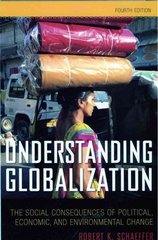accuracy!!
1. A company is considering raising a loan, which would increase the company s
gearing ratio to a significant level, rather than issuing equity. In which of the
following situations would such a decision be most appropriate?
A Interest rates are low.
B The company owns valuable land and buildings that can be pledged as
security.
C The company s operating revenues and costs are relatively stable.
D The company has a good relationship with its principal lender. [2]
2. A quoted company issued loan stock which is publicly traded. Which of the
following would have no effect on the real rate of return offered by this loan stock?
A A change in the rate of corporation tax.
B A change in the rate of inflation.
C A change in rates offered by Treasury Bills.
D A change in the perceived risk of the company defaulting.
[2]
3. A company evaluates all potential investment projects by ensuring that the internal
rate of return exceeds the company s weighted average cost of capital. Which of the
following reasons is the soundest justification for such a policy?
A Rejects unacceptable proposals.
B Incorporates stock market sentiments.
C Most consistent with finance theory.
D Provides a simple decision rule.
4
(i) Describe the essential feature of a proportional hazards model. [2] A study was made of the impact of drinking beer on men aged 60 years and over. A sample of men was followed from their 60th birthdays until they died, or left the study for other reasons. The baseline hazard of death, u, was assumed to be constant, and a proportional hazards model was estimated with a single covariate: the average daily beer intake in standard-sized glasses consumed, x. The equation of the model is: h(t) = uexp(Bx) where h(1) is the hazard of death at age 60 + t. The estimated value of u is 0.03, and the estimated value of B is 0.2. (ii) Explain how u and B should be interpreted, in the context of this model. [2] (iii) Calculate the estimated hazard of death of a man aged exactly 62 years who drinks two glasses of beer a day. [1] A man is aged exactly 60 years and drinks three glasses of beer a day. (iv) (a) Calculate the estimated probability that this man will still be alive in 10 years' time. (b ) Calculate the expectation of life at age 60 years for this man. [2] Another man is aged exactly 60 years. He drinks beer only in his local bar. He drinks all the beer he buys and is expected to continue drinking the same amount of beer every day until he dies. The owner of the bar is interested in selling as much beer as possible. (v) Determine the average number of glasses of beer a day the owner must sell the man in order to maximise the total amount of beer the man buys over hisThe market price S, of a traded security satisfies the following stochastic differential equation: dS, = (u-20)5,di +GS,dW, where W, is a standard Brownian motion under the probability measure P". (i) Determine the value of 2 such that the discounted asset price process S, =er'S, is a martingale under the given probability measure. [3] (ii) Explain whether the probability measure P is the real-world or risk-neutral measure, for the value of 2. obtained in part (i). [3]A careful shopkeeper takes delivery of a batch of 20 packets of cheese. Every morning at 8 a.m. precisely she checks to see if any of the cheese has gone mouldy and throws away any mouldy packets. As she runs a high quality establishment, she has lots of customers and some of the cheese is sold. After ten days she decides the cheese will be too old to sell and throws out the remaining packets. A curious customer observes that the shopkeeper has created an observational plan for calculating the hazard of cheese going mouldy. (i) State, with reasons, THREE types of censoring present in this situation. [3] (ii) Assess, for EACH type of censoring listed in your answer to part (i), whether a change to the observational plan could be made which would remove that type of censoring. [3] The shopkeeper made notes at 8 a.m. each day as follows: Day Shopkeeper's notes Sold three packets already Sold one more packet One went mouldy QUAWN. Two more mouldy ones, I hope my fridge is cold enough Seems OK, nothing to report Sold four more - all to one customer! Nothing to report Another two mouldy ones this morning Sold two more 10 Three more mouldy ones - I'll throw the rest out (iii) Calculate the Kaplan-Meier estimate of the survival function for cheese staying free from mould. [6]









